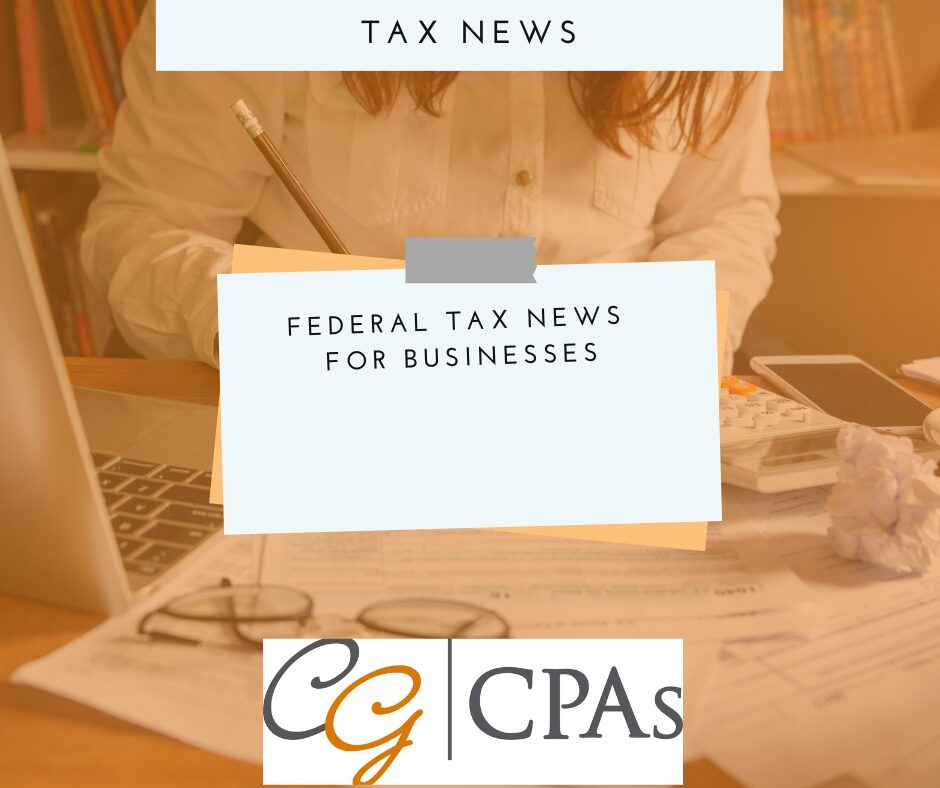Know the rules for backup withholding
 When your business hires independent contractors, you’re generally not responsible for withholding tax from their compensation. But there are circumstances in which you should withhold a certain percentage of tax (backup withholding) to help ensure the IRS receives it.
When your business hires independent contractors, you’re generally not responsible for withholding tax from their compensation. But there are circumstances in which you should withhold a certain percentage of tax (backup withholding) to help ensure the IRS receives it.
The most common reason for backup withholding is that a contractor has failed to provide a valid Taxpayer Identification Number, such as a Social Security number. In such cases, you should withhold 24% of the payment and deposit that amount with the IRS using Form 945. At the end of the year, provide the contractor with a Form 1099 that reports the amount you paid and the amount you withheld.
Disaster emergency plans for your business
 Although most disaster preparation information is aimed at individuals, businesses also need emergency plans. Your first concern should be planning to safely evacuate employees, customers and other people. But you also need to regularly back up essential files, including tax and payroll data. This should be done in the cloud or in a separate physical location. Photograph or video record business assets so you’ll have proof for insurance and tax purposes. And if you use a payroll service, ask if it has a fiduciary bond in place. It can protect you in the event the payroll service defaults.
Although most disaster preparation information is aimed at individuals, businesses also need emergency plans. Your first concern should be planning to safely evacuate employees, customers and other people. But you also need to regularly back up essential files, including tax and payroll data. This should be done in the cloud or in a separate physical location. Photograph or video record business assets so you’ll have proof for insurance and tax purposes. And if you use a payroll service, ask if it has a fiduciary bond in place. It can protect you in the event the payroll service defaults.
For help determining disaster losses for tax purposes, contact us or visit here.
No changes to IRS tax tables and forms
 As part of its phased implementation of the tax bill enacted on July 4, 2025, the IRS announced that there will be no changes to certain information returns and withholding tables for tax year 2025. Specifically, Forms W-2, existing Forms 1099, and Forms 941 and other payroll return forms will remain unchanged for 2025. Federal income tax withholding tables won’t be updated for the new law provisions in 2025. The IRS said that employers and payroll providers should continue using current procedures for reporting and withholding. The tax agency said that it’s working on new guidance and updated forms for 2026, including how tips and overtime pay are reported.
As part of its phased implementation of the tax bill enacted on July 4, 2025, the IRS announced that there will be no changes to certain information returns and withholding tables for tax year 2025. Specifically, Forms W-2, existing Forms 1099, and Forms 941 and other payroll return forms will remain unchanged for 2025. Federal income tax withholding tables won’t be updated for the new law provisions in 2025. The IRS said that employers and payroll providers should continue using current procedures for reporting and withholding. The tax agency said that it’s working on new guidance and updated forms for 2026, including how tips and overtime pay are reported.
Dependent care flexible spending accounts
 Employers seeking to offer family-friendly benefits may want to consider flexible spending accounts (FSAs) for dependent care. These FSAs let employees make pre-tax contributions through payroll withholding to help cover eligible expenses. Because of the major tax bill enacted on July 4, 2025, the annual contribution limit, currently $5,000, will rise to $7,500 in 2026.
Employers seeking to offer family-friendly benefits may want to consider flexible spending accounts (FSAs) for dependent care. These FSAs let employees make pre-tax contributions through payroll withholding to help cover eligible expenses. Because of the major tax bill enacted on July 4, 2025, the annual contribution limit, currently $5,000, will rise to $7,500 in 2026.
FSA contributions reduce employees’ income tax and payroll tax and employers’ payroll tax. Withdrawals used to pay qualified expenses are tax-free. These include expenses for care for a child under age 13 or another dependent unable to care for themselves due to physical or mental limitations. Contact us with questions.
Guidance for reinstated business deduction
 The recently passed major tax bill reinstates immediate deductions for domestic research and experimental (R&E) costs beginning in 2025. The IRS has issued transitional guidance (Revenue Procedure 2025-28) on the change. Among many other things, the guidance explains the procedures for how, if you began to amortize R&E expenses in 2022, 2023 and/or 2024, you can deduct the remaining amount on your 2025 return. Or, you can split it between your 2025 and 2026 returns, rather than continuing to amortize over what remains of the five-year period.
The recently passed major tax bill reinstates immediate deductions for domestic research and experimental (R&E) costs beginning in 2025. The IRS has issued transitional guidance (Revenue Procedure 2025-28) on the change. Among many other things, the guidance explains the procedures for how, if you began to amortize R&E expenses in 2022, 2023 and/or 2024, you can deduct the remaining amount on your 2025 return. Or, you can split it between your 2025 and 2026 returns, rather than continuing to amortize over what remains of the five-year period.

